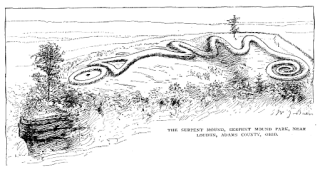 W
WIn the sequence of cultural stages first proposed for the archaeology of the Americas by Gordon Willey and Philip Phillips in 1958, the Lithic stage was the earliest period of human occupation in the Americas, as post-glacial hunters and collectors spread through the Americas. The stage derived its name from the first appearance of Lithic flaked stone tools. The term Paleo-Indian is an alternative, generally indicating much the same period.
 W
WPaleo-Indians, Paleoindians or Paleo-Americans, were the first peoples who entered, and subsequently inhabited, the Americas during the final glacial episodes of the late Pleistocene period. The prefix "paleo-" comes from the Greek adjective palaios (παλαιός), meaning "old" or "ancient". The term "Paleo-Indians" applies specifically to the lithic period in the Western Hemisphere and is distinct from the term "Paleolithic".
 W
WIn the classification of Archaeological cultures of North America, the term Plainview points refer to Paleoindian projectile points dated between 10,000–9,000 Before Present. The point was named in 1947 after the discovery of a large cache of unfluted, lanceolate spear tips with concave bases that were found in a Bison antiquus kill site along the Running Water Draw river, near the town of Plainview in Texas, United States. The point is found primarily throughout the South Plains, however, this range may sometimes be misidentified, as "Plainview" was previously used as a general term to describe unfluted lanceolate points throughout the entirety of the Plains, as well as the eastern Upper Mississippi Valley.
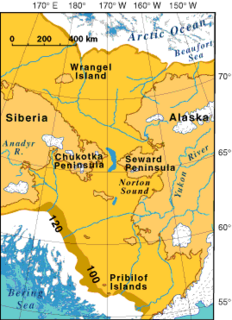 W
WThe Ancient Beringians (AB) is a specific archaeogenetic lineage, based on the genome of an infant found at the Upward Sun River site, dated to 11,500 years ago. The AB lineage diverged from the Ancestral Native American (ANA) lineage about 20,000 years ago. The ANA lineage was estimated as having been formed between 20,000 and 25,000 years ago by a mixture of East Asian and Ancient North Eurasian lineages, consistent with the model of the peopling of the Americas via Beringia during the Last Glacial Maximum.
 W
WBeringia is defined today as the land and maritime area bounded on the west by the Lena River in Russia; on the east by the Mackenzie River in Canada; on the north by 72 degrees north latitude in the Chukchi Sea; and on the south by the tip of the Kamchatka Peninsula. It includes the Chukchi Sea, the Bering Sea, the Bering Strait, the Chukchi and Kamchatka Peninsulas in Russia as well as Alaska in the United States.
 W
WThe Ciboney, or Siboney, were a Taíno people of Cuba, Jamaica, Haiti and Dominican Republic. A Western Taíno group living in central Cuba during the 15th and 16th centuries, they had a dialect and culture distinct from the Classic Taíno in the eastern part of the island, though much of the Ciboney territory was under the control of the eastern chiefs. Confusion in the historical sources led 20th-century scholars to apply the name "Ciboney" to the non-Taíno Guanahatabey of western Cuba and various archaic cultures around the Caribbean, but this is deprecated.
 W
WThe Clovis culture is a prehistoric Paleoamerican culture, named for distinct stone tools found in close association with Pleistocene fauna at Blackwater Locality No. 1 near Clovis, New Mexico in the 1920s and 1930s. It appears around 11,500–11,000 uncalibrated RCYBP at the end of the last glacial period, and is characterized by the manufacture of "Clovis points" and distinctive bone and ivory tools. Archaeologists' most precise determinations at present suggest this radiocarbon age is equal to roughly 13,200 to 12,900 calendar years ago. Clovis people are considered to be the ancestors of most of the indigenous peoples of the Americas.
 W
WThe Cody complex is a Paleo-Indian culture group first identified at a bison antiquus kill site near Cody, Wyoming in 1951. Points possessing characteristics of Cody Complex flaking have been found all across North America from Canada to as far south as Oklahoma and Texas.
 W
WThe following outline is provided as an overview of and topical guide to the prehistoric people of Colorado, which covers the period of when Native Americans lived in Colorado prior to contact with the Domínguez–Escalante expedition in 1776. People's lifestyles included nomadic hunter-gatherering, semi-permanent village dwelling, and residing in pueblos.
 W
WThe Dalton Tradition is a Late Paleo-Indian and Early Archaic projectile point tradition. These points appeared in most of Southeast North America around 10,000–7,500 BC."They are distinctive artifacts, having concave bases with "ears" that sometimes flare outward ." ' These tools not only served as points but also as saws and knives. They were often changed in form and function because the hunters would sharpen the points over and over and would eventually turn them into knives then chisels or scrapers. A variant on the Dalton point is the Hardaway point of North Carolina.
 W
WEve of Naharon is the skeleton of a 25- to 30-year-old human female found in the Naharon section of the underwater cave Sistema Naranjal in Mexico near the town of Tulum, around 80 miles (130 km) south west of Cancún. The Naranjal subsystem is a part of the larger Sistema Ox Bel Ha. The skeleton is carbon dated to 13,600 years ago, which makes it one of the oldest documented human finds in the Americas.
 W
WFolsom points are a distinct form of knapped stone projectile points associated with the Folsom tradition of North America. The style of tool-making was named after the Folsom Site located in Folsom, New Mexico, where the first sample was found by George McJunkin within the bone structure of a bison, an animal hunted by the Folsom people in New Mexico, in 1908. The Folsom point was identified as a unique style of projectile point in 1926.
 W
WThe Folsom Complex was a Paleo-Indian archaeological culture that occupied much of central North America. The term was first used in 1927 by Jesse Dade Figgins, director of the Colorado Museum of Natural History.
 W
WThe game drive system is a hunting strategy in which game are herded into confined or dangerous places where they can be more easily killed. It can also be used for animal capture as well as for hunting, such as for capturing mustangs. The use of the strategy dates back into prehistory. Once a site is identified or manipulated to be used as a game drive site, it may be repeatedly used over many years.
 W
WThe great bison belt is a tract of rich grassland that ran from Alaska to the Gulf of Mexico around 9000 BC. The great bison belt was supported by spring and early summer rainfall that allowed short grasses to grow. These grasses retain their moisture at the roots which allowed for grazing ungulates such as bison to find high-quality nutritious food in autumn.
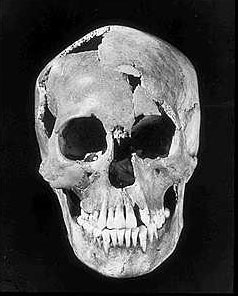 W
WMinnesota Woman, also known as Pelican Rapids-Minnesota Woman, is the skeletal remains of a woman thought to be 8,000 years old. The bones were found near Pelican Rapids, Minnesota on June 16, 1931, during construction on U.S. Route 59. The bones were brought to Dr. Albert Jenks at the University of Minnesota, who identified them as the bones of a woman who was 15 or 16 years old, but who had never borne children. The woman had two artifacts—a dagger made from an elk's horn and a conch shell pendant. The conch shell came from a snail species known as Busycon perversum, which had previously only been known to exist in Florida.
 W
WNobles Pond Site is a 25-acre archaeological site near Canton in Stark County, Ohio and is a historical site with The Ohio Historical Society. It is one of the largest Clovis culture site in North America. At the end of the Ice age, about 10,500 to 11,500 years ago, a large number of Paleo-Indians, the first people to live in Ohio, camped at the site. Artifacts on the site, primarily excavated by volunteers, provide insight into how they made and used tools, obtained materials, and how they lived.
 W
WPaleo Crossing Site, also known as the Old Dague Farm Site, is an archaeological site near Sharon Center, Ohio in Medina County where Clovis artifacts dated to 13,000 years ago were found. The Cleveland Museum of Natural History conducted an excavation from 1990 to 1993. The site provides evidence of Paleo-Indians in northern Ohio and may be the area's oldest residents and archaeologist Dr. David Brose believes that they may be "some of the oldest certain examples of human activity in the New World." The site contains charcoal recovered from refuse pits. There were also two post holes and tools that were made from flint from the Ohio River Valley in Indiana, 500 miles from Paleo Crossing, which indicates that the hunter-gatherers had a widespread social network and traveled across distances relatively quickly. The post holes are evidence that there was a shelter built on the site.
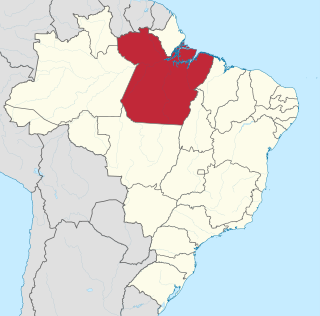 W
WCaverna da Pedra Pintada, is an archaeological site in northern Brazil, with evidence of human presence dating ca. 11,200 years ago.
 W
WThe Pedra Pintada or "Painted Rock", is a large rock located in the state of Roraima, Brazil. It is 85 metres long, 35 metres high and 30 metres wide, and is found in the Boa Vista savanna. There are many pictograms and other archaeological evidence inscribed on the walls of the rock.
 W
WPiki Mach'ay is an archaeological site in the Ayacucho Valley of Peru. Radiocarbon dates from this cave give a human presence ranging from 22,200 to 14,700 years ago, but this evidence has been disputed and a more conservative date 12,000 years BCE seems possible.
 W
WThe Plano cultures is a name given by archaeologists to a group of disparate hunter-gatherer communities that occupied the Great Plains area of North America during the Paleo-Indian or Archaic period.
 W
WPrehistory of Ohio provides an overview of the activities that occurred prior to Ohio's recorded history. The ancient hunters, Paleo-Indians, descended from humans that crossed the Bering Strait. There is evidence of Paleo-Indians in Ohio, who were hunter-gatherers that ranged widely over land to hunt large game. For instance, mastodon bones were found at the Burning Tree Mastodon site that showed that it had been butchered. Clovis points have been found that indicate interaction with other groups and hunted large game. The Paleo Crossing Site and Nobles Pond Site provide evidence that groups interacted with one another. The Paleo-Indian's diet included fish, small game, and nuts and berries that gathered. They lived in simple shelters made of wood and bark or hides. Canoes were created by digging out trees with granite axes.
 W
WThe settlement of the Americas is widely accepted to have begun when Paleolithic hunter-gatherers entered North America from the North Asian Mammoth steppe via the Beringia land bridge, which had formed between northeastern Siberia and western Alaska due to the lowering of sea level during the Last Glacial Maximum. These populations expanded south of the Laurentide Ice Sheet and spread rapidly throughout both North and South America, by 14,000 years ago. The earliest populations in the Americas, before roughly 10,000 years ago, are known as Paleo-Indians.
 W
WSheridan Cave is a Paleo-Indian archaeological site from the late Ice age in Wyandot County, Ohio. Glacial deposits sealed off the cave more than 10,000 years ago. Sheriden Cave is a karst sinkhole on a dolomite ridge that crosses Hancock and Wyandot Counties. It is associated with the Indian Trail Caverns that opened in 1927. Sheriden Cave was discovered in 1989. The cave is unique because in addition to stone tools, there were also bone tools, remains of extinct animals, and organic matter found in the cave. Radiocarbon dating of artifacts indicate that they were used 11,000 and 12,000 years ago.
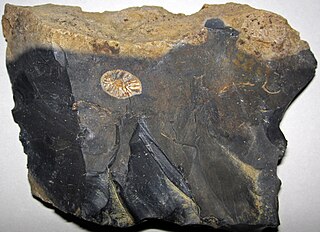 W
WUpper Mercer flint or Upper Mercer chert is a type of flint, or a pure form of chert, found in Coshocton, Hocking, and Perry counties of Ohio. Made of forms of silica and quartz, the hard and brittle stone was used by prehistoric people to make tools and weapons. To create stone tools, flint was heated to make chipping away at the stone easier, and then the flint was chipped to form razor-sharp edges. Resulting tools included spearheads, scrapers, knives, and arrows.
 W
WVero man refers to a set of fossilized human bones found near Vero, Florida, in 1915 and 1916. The human bones were found in association with those of Pleistocene animals. The question of whether humans were present in Florida during the Pleistocene was controversial at the time, and most archaeologists did not accept that the Vero fossils were that old. Recent studies show that the Vero human bones are from the Pleistocene and are the largest collection of human remains from the Pleistocene found in North America.
 W
WWelling Site is an archaeological site of the Paleo-Indian period, meaning the time of the earliest humans. Located in Coshocton County, Ohio, it was a site for quarrying stone in the Upper Mercer chert source area. Based upon the microwear analysis of stone tools, it is believed to be a base camp where people learned and shared Clovis tool-making techniques, ate, exchanged information, and perhaps found mates from others groups.